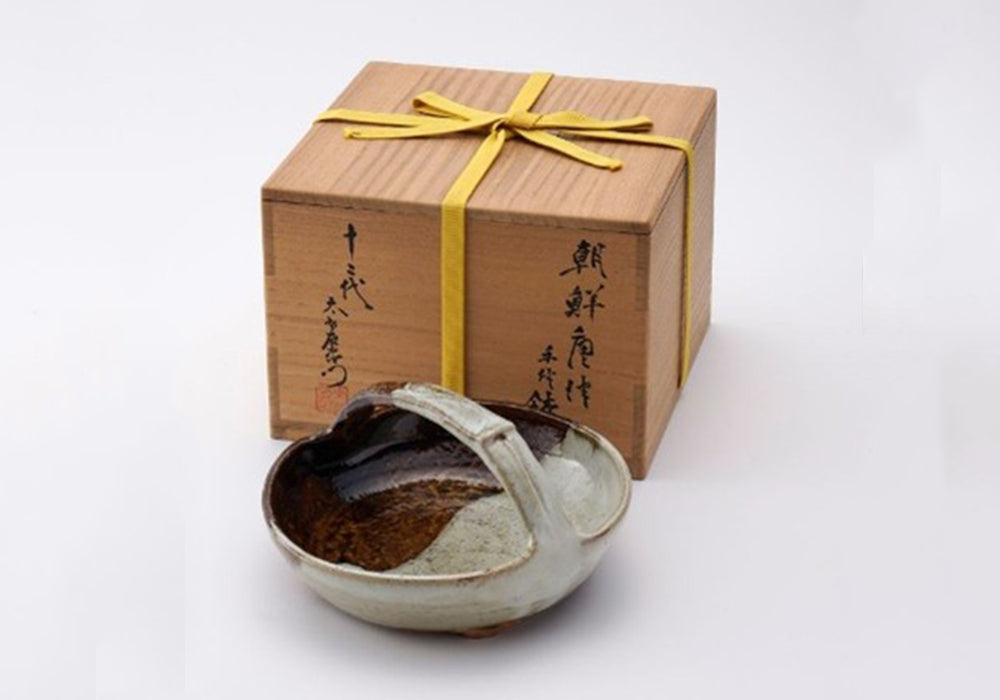Care Methods for Japanese Ceramics and Traditional Crafts
Japanese ceramics, such as Arita porcelain and Hasami porcelain, have unique charms that vary by region. To preserve their beauty for years to come, proper care is essential. Ceramics and porcelain differ in materials and manufacturing processes, requiring distinct maintenance methods. By correctly caring for traditional crafts like Arita porcelain and Hasami porcelain, you can protect their value while incorporating them into daily life.
In this article, we will explore the characteristics of Japanese ceramics and provide a thorough guide to their care. Learn the key points to keep your favorite traditional crafts beautiful and enjoy them for many years.

Table of Contents
-
Understanding the Differences Between Ceramics and Porcelain
- Differences in Materials and Manufacturing Processes
- Differences in Appearance and Texture
- Why Care Methods Differ
-
Characteristics and Basic Care of Ceramics
- Absorbency and Associated Risks
- Importance of Sealing Treatment
- Key Points for Daily Care
- Storage Precautions
-
Characteristics and Care Tips for Porcelain
- Hardness and Durability Features
- Preventing Scratches and Proper Washing Methods
- Dishwasher Compatibility and Precautions
- Storage Techniques
-
Comparing Care Methods for Ceramics and Porcelain
- Care Adjustments Based on Differences in Absorbency
- Differences in Washing and Drying Methods
- Stacking and Storage Methods
- Choosing the Right Detergent for Each Material
-
Tips for Maintaining Beauty Through Proper Care
- Daily Care and Long-Term Storage Tips
- Ways to Extend the Lifespan of Ceramics and Porcelain
- Checklist for Preserving Beauty
-
Conclusion: Keeping Arita Ware and Hasami Ware Beautiful
- Characteristics and Care of Arita Ware and Hasami Ware
- Tips for Daily Use and Storage
- How to Enjoy Them for Years with Proper Care
★Understanding the Differences Between Ceramics and Porcelain
Both ceramics and porcelain are traditional Japanese crafts, but they differ in materials and manufacturing processes. These differences affect not only their appearance and texture but also their care methods.
Ceramics have a warm, rustic charm and are highly absorbent. In contrast, porcelain is smooth, bright white, and has a high hardness with little to no absorbency. Understanding these characteristics will help ensure proper care.
✅Key Differences Between Ceramics and Porcelain
- Ceramics are made from clay and have high absorbency.
- Porcelain is made from stone and has low absorbency.
- Ceramics have a warm, earthy texture.
- Porcelain is smooth and characterized by its bright whiteness.
- They differ significantly in manufacturing processes and firing temperatures.

★Characteristics and Basic Care of Ceramics
Ceramics are highly absorbent, and if not thoroughly dried after use, they can develop mold or stains. Before first use, a sealing treatment should be applied, and gentle washing is essential for daily care. Proper maintenance is key to ensuring long-term use.
✅Ceramic Care Tips
- Apply a sealing treatment before first use.
- Hand wash using a soft sponge.
- Use mild detergent and avoid bleach.
- Ensure thorough drying to prevent mold.
- For long-term storage, wrap in newspaper for protection.
★Characteristics and Care Tips for Porcelain
Porcelain is hard and has low absorbency, making it more resistant to stains compared to ceramics. However, it is also more prone to scratches. Since it is fired at high temperatures, it is highly durable and hygienic, but careful handling is required.
✅Porcelain Care Tips
- Many porcelain items are dishwasher-safe, making care easier.
- Avoid using metal scrubbers, as they can cause scratches.
- Wash with mild detergent and allow to air dry.
- Due to its hardness, be cautious of drops to prevent breakage.
- Avoid stacking when storing to prevent chipping.

★Comparing Care Methods for Ceramics and Porcelain
The care requirements for ceramics and porcelain differ significantly. Ceramics are highly absorbent, making proper drying essential, while porcelain is harder and requires careful washing to avoid scratches. By understanding these characteristics and applying the right care methods, you can maintain their beauty for years.
✅Key Differences in Care
- Ceramics require sealing treatment before first use.
- Porcelain should be washed with a soft cloth to prevent scratches.
- Ceramics need thorough drying to prevent mold.
- Porcelain should not be stacked to avoid breakage.
- Choosing the right detergent for each material is essential.
★Tips for Maintaining Beauty Through Proper Care
Daily maintenance is essential to keep your precious ceramics and porcelain looking beautiful for a long time. By understanding the unique characteristics of each and following the appropriate care methods, you can preserve their value and enjoy them for years. Handle them with care and appreciation.
✅Care Tips for Longevity
- Wash gently by hand every day.
- Store ceramics and porcelain separately.
- Allow thorough air drying after washing.
- Ensure complete drying before long-term storage.
- Follow proper care methods to maintain their beauty.

★Conclusion: How to Keep Arita Ware and Hasami Ware Beautiful
To preserve the beauty of Arita ware and Hasami ware, it is essential to understand the differences between ceramics and porcelain and care for them accordingly. Ceramics, with their high absorbency, require sealing treatment and thorough drying, while porcelain, known for its hardness, needs careful handling to prevent scratches.By following the proper care methods, you can enjoy these precious traditional crafts for years while maintaining their value. Make daily maintenance a habit and continue to appreciate their timeless beauty.

